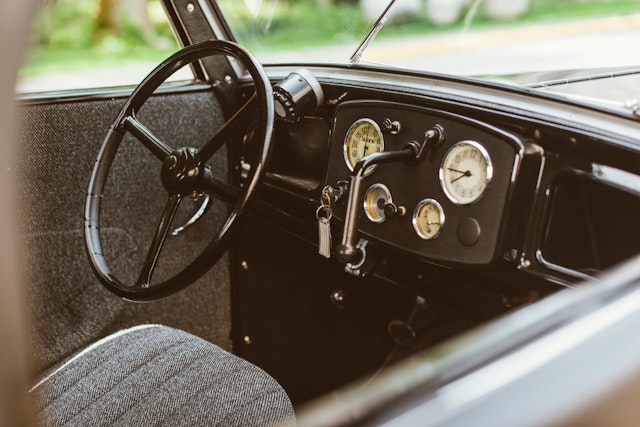Everything You Need to Know About Having Your Classic Car Detailed

Detailing your classic car can be the most satisfying and fun part of investment ownership to do yourself. There’s no worry about messing up any of the parts under the hood that keep you rolling -- all you’re doing is making your ride look better. (And we all know looking good on the road is one of the best parts of being a classic car owner.)
But how often should you be detailing your classic car? How much time should you be spending? And if you take it to a professional car detailer, what should you be looking for?
We know that every decision you make about your classic car is a carefully considered one, so here’s a little help when it comes to keeping your vehicle gleaming proudly for years to come.
How often should I get my car detailed?
For any car that’s still spending time outside the garage and on the road, giving it a wash every couple weeks is the bare minimum we’d recommend. For drivers in colder climates where a car is exposed to salt, sand and other road treatments, we’d raise that to a weekly bath so you can rinse off those contaminants before they have a chance to set in.
And grab those sheepskin mitts or microfiber cloths: hand-washing your car is a must. (Yes, even if the gas station has a deal when you fill up your tank. Those $6 express washes are fine for your daily driver, but don’t trust a machine to do the right kind of job for your classic car.) Don’t forget to get vehicle-specific products for your car’s finish, tires and any vinyl canopy, landau or convertible top.
It may sound like overkill, but if you really want to be as safe as possible, you should wash your car following every single drive. Each time you take out your car you’re putting it in contact with corrosive chemicals (including vehicle exhaust) grit, dirt, bugs and even tree sap that, if not removed, can have a negative impact on your finish.
As for the interior, barring any major spills or stains, a classic car getting regular street time will need a true deep-clean roughly every three months; every six months at most. Once a month isn’t unheard of either, but your level of use will determine the interior’s schedule.
How much should I detail my car?
It can be hard to know how much to detail a classic car, especially if that car is spending regular time on the road. Classic car detailing for your interior and exterior are also likely to require different levels of care.
Keeping a close eye on the exterior of your car can also keep you up to speed on any little nicks or dings that might occur on the road, and staying ahead of those can prevent larger cosmetic issues (or worse) later on.
Luckily, a decent wash doesn’t have to take all afternoon...unless you want it to. Start from the roof and work your way down, and washing by hand ensures you can get every part of the finish, unlike a machine wash. You’ll want to use two buckets, one for the cleanser and one for rinsing your mitt to get any grit and dirt off before going back for another swipe.
If you’re planning to invest more time, we’d add a clay bar treatment to gently pick up any stubborn particles contaminants that could continue to damage your finish. Don’t forget to use different products for the tires and wheels, and a final rinse to get any lingering chemicals off the exterior. A good coat of wax is the final step for a perfect and protective shine.
And just like when you’re washing the exterior, start your interior detailing from the top down. Clean your windshield and windows, dust and clean the dashboard, wipe down the steering wheel and instrument panel, vacuum and clean your seats, shampoo your carpets, clean out the center console, door panels and pockets.
Can classic car detailing become a lot of work? Yes. Are there services out there that can take care of this for you? Also yes!
What should I look for in a professional car detailer or detailing service?
If you’re not planning to invest your time in detailing your car, you’re going to be investing your money. Keeping a classic car detailed is as important as keeping it running, especially if you’re looking to protect your resale value. You don’t want to put the look of your car in just anybody’s hands.
The first question to ask is if they have experience working with classic cars - many detailers will not have . Your immediate followup question is to ask whether the detailer is familiar with not only the make and model of your vehicle, but the year it was built.
Different eras and different countries of origin used different paints, different fabrics and different interiors; it’s important to know what products can and can’t be used on what materials, as well as what tools should or shouldn’t be used -- keep those high-speed mechanical buffers and polishers away from your car’s vintage paint job!
You should also decide if you want a mobile detailer to come to you, or if you prefer to visit a detailing-specific facility for your deep clean. Mobile services may cost a little less due to a lack of overhead and you keep your car off the road, ensuring it’s at its cleanest in your own garage, which is a good feeling. That said, a mobile detailer may not have quite as many products and tools for the job as a dedicated facility.
Your best resource for finding a quality classic car detailing service are your fellow classic car drivers, so make sure to ask around. You can start by joining the Hagerty owner forums.
